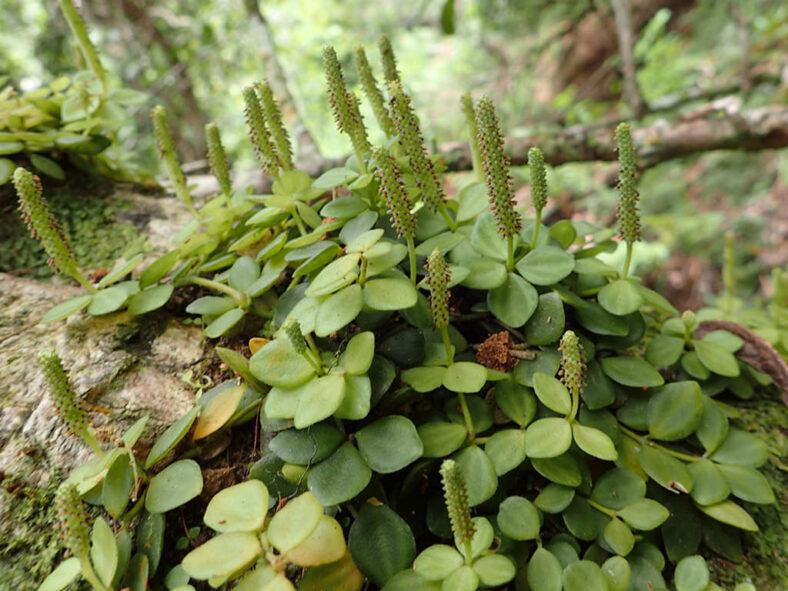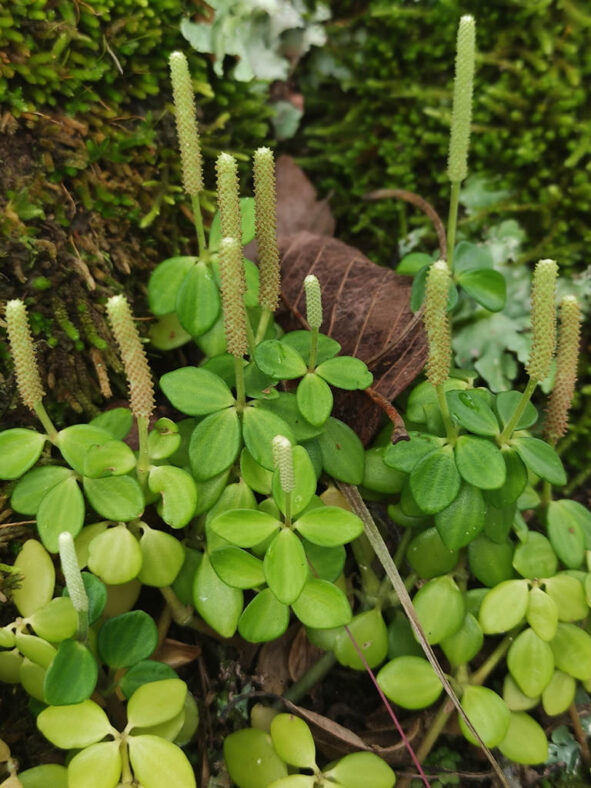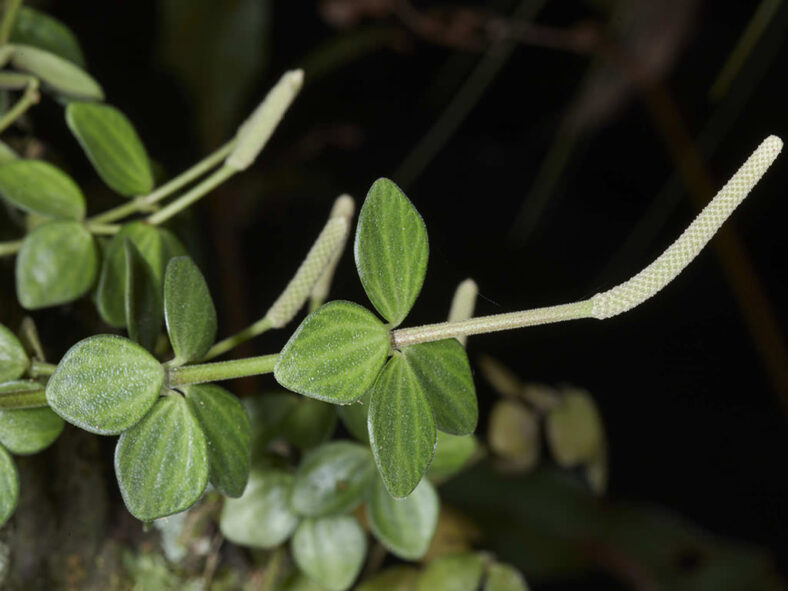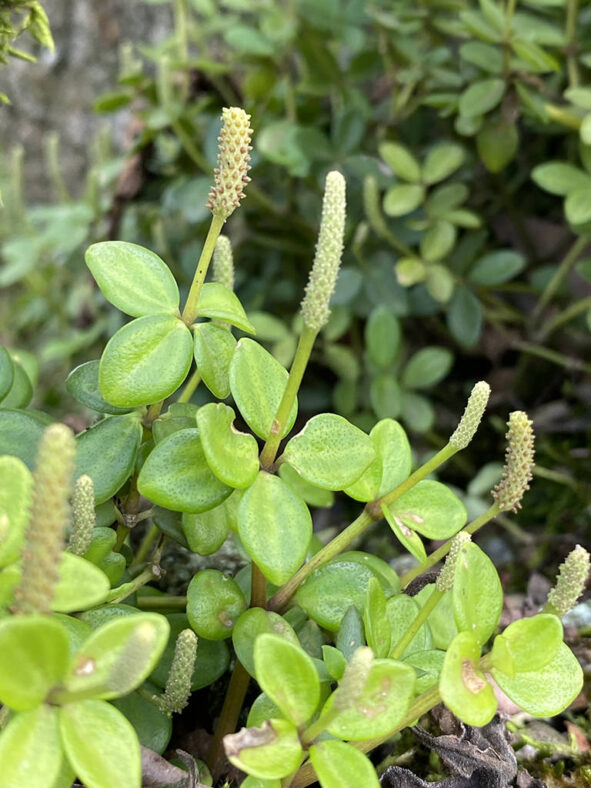Peperomia tetraphylla is a small, easy-to-grow plant known for its attractive leaves, making it a popular choice for decorative pots and as a trailing houseplant. In some parts of Asia, it is used medicinally as a tonic and to treat kidney disorders. In Guatemala, crushed leaves of the plant are applied as poultices to relieve skin irritation caused by the poisonous tree Toxicodendron striatum.
Scientific Name
Peperomia tetraphylla (G.Forst.) Hook. & Arn.
Common Name(s)
Acorn Peperomia, Four-leaved Peperomia
Synonym(s)
Peperomia tetraphylla var. tetraphylla, Piper tetraphyllum
Scientific Classification
Family: Piperaceae
Genus: Peperomia
Etymology
The specific epithet "tetraphylla" (pronounced "tet-ruh-FIL-uh") means "having four leaves" and refers to the leaves of this species that usually grow in whorls of four along the stems.
Origin
Peperomia tetraphylla has a pantropical distribution. It grows as an epiphyte or lithophyte, usually on moss in the shade of rocks or against trunks.
Description
Peperomia tetraphylla is a succulent plant that forms dense clumps of creeping stems that bear fleshy leaves arranged in whorls of three or four along the stem. The stems can be simple or dichotomously branched and may grow up to 12 inches (30 cm) long, rooting at the nodes. The leaves are broadly elliptic or nearly disc-shaped, measuring up to 0.5 inches (1.3 cm) in length and 0.35 inches (0.9 cm) in width. They are dark green above and grey-green below and have three prominent veins from the base. Each leaf is attached to the stem by a short petiole.
Throughout the year, especially in summer, Peperomia tetraphylla produces inconspicuous flowers that appear in solitary, club-shaped spikes that can be green or yellowish. The tiny fruits are either narrowly ellipsoid or ovoid.

How to Grow and Care for Peperomia tetraphylla
Light: Peperomia tetraphylla thrives in bright, indirect light but should be protected from direct sunlight. It also grows well under grow lights.
Soil: Selecting the right soil is essential for this plant's healthy growth. Use a well-draining potting mix that is also rich in nutrients.
Temperature: Peperomia tetraphylla does well in the relatively cool conditions found in most homes, but it dislikes dry air. It grows best in USDA Plant Hardiness Zones 10a to 11b, with average minimum winter temperatures ranging from 30°F to 50°F (- 1.1°C to 10°C).
Watering: The biggest problem in growing this plant is typically related to watering. It prefers consistently moist soil but is very sensitive to overwatering. During the growing season, water the plant regularly and mist it daily to maintain high humidity. Water sparingly in winter.
Fertilizing: Apply a balanced fertilizer diluted to half-strength during the growing season.
Repotting: Peperomia tetraphylla prefers to be slightly pot-bound, so be careful not to overpot it. Repot it in the spring to refresh the soil, but place it back in the same-sized container after pruning the roots, or move it to a pot one size larger.
Propagation: This plant can be propagated by seeds or by taking leaf and stem cuttings, preferably in spring or summer. Using a rooting hormone can help increase the chances of successful propagation. Seed propagation is less common due to slower germination rates.
Learn more at How to Grow and Care for Peperomia.
Toxicity of Peperomia tetraphylla
Peperomia tetraphylla is considered non-toxic, making it safe for children and pets.
Links
- Back to genus Peperomia
- Succupedia: Browse succulents by Scientific Name, Common Name, Genus, Family, USDA Hardiness Zone, Origin, or cacti by Genus
Photo Gallery
Click on a photo to see a larger version.


